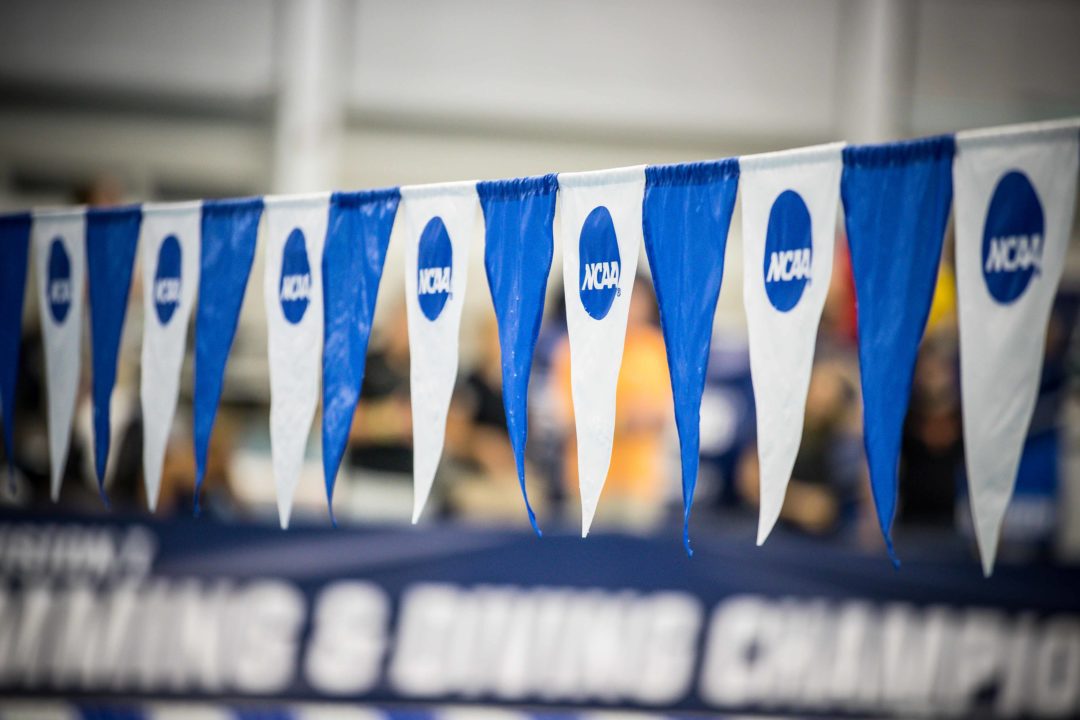SwimSwam Pulse is a recurring feature tracking and analyzing the results of our periodic A3 Performance Polls. You can cast your vote in our newest poll on the SwimSwam homepage, about halfway down the page on the right side, or you can find the poll embedded at the bottom of this post.
Our most recent poll asked SwimSwam readers a philosophical question on NCAA recruiting and prospect value:
RESULTS
Question: What do you value higher in a high school junior as an NCAA recruit:
- One standout event at NCAA scoring level – 58.4%
- 4-5 good events, but still a ways out of NCAA scoring – 41.6%
58% picked the athlete with one standout time at an NCAA scoring level, compared to 41% picking the versatile athlete who doesn’t yet have a scoring time.
The answer roughly jived with what we tend to value in our recruiting rankings – though of course the rankings aren’t done entirely in a vacuum as this poll was. There are always other factors in play: how fast an athlete is dropping (or if they’ve plateaued), which events specifically they are projected NCAA scorers in, heights, foot sizes, relay value and how NCAA prospects typically develop in their events (for example, high school IMer rarely have NCAA scoring times, but many seem to develop a lot early in college with big time drops).
In some ways, it’s a question of ceilings vs floors. An athlete who already has a scoring time will in most cases have the higher floor – as long as they don’t actually regress (which few top-level prospects actually do), they’ll put up NCAA points, even if their improvement slows down to almost nothing. On the other hand, a versatile athlete can have a higher ceiling – regular drops across the board will take them from a zero-event scorer to a 2-3-event scorer, with perhaps even more opportunities on relays.
For college coaches, we have to infer that they probably fall more to the side of the NCAA-scoring swimmer. Though everyone loves the underdog stories of developmental recruits who turn into superstars, that anecdotal evidence doesn’t accurately reflect the vast majority of developmental types who never reach scoring levels, or only do so by their senior seasons. There’s always a lot of chatter about top athletes peaking too early or regressing as they age, but that’s actually relatively rare. The high school standouts most often framed as ‘big recruits who underperformed’ – those athletes still usually turn out to be NCAA contributors, and usually drop at least some time. The ‘bust’ label tends to be based more on not living up to projections of being superstars or multi-time NCAA champs. An athlete who already has an NCAA scoring time is very likely to wind up actually scoring. Still, it’s hard to argue against the multi-event scoring potential of a recruit you feel really good about.
Below, vote in our new A3 Performance Poll, which asks voters to pick the strongest of the four recently-announced rosters in Group A of the International Swimming League. You can see the full announced rosters here.
ABOUT A3 PERFORMANCE
The A3 Performance Poll is courtesy of A3 Performance, a SwimSwam partner


Seems that at the Men’s D1 level that a high school junior with an NCAA scoring time is pretty much a unicorn. If I read the recent re-rank of the class of 2020 correctly only 4 in the top 20 have a 2019 invite time, and none with a scoring time. Only 45 (I think) of the roughly 135 DI Men’s programs even qualified a swimmer in an individual event. So yeah, if you’re an NCAA scorer in High School you’re going to be pretty well recruited.